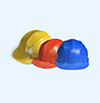-
 Cutting Pliers 1 x $80.00
Cutting Pliers 1 x $80.00 -
 Safety Helmet 1 x $120.00
Safety Helmet 1 x $120.00 -
 Jack Hammer Drill 1 x $230.00
Jack Hammer Drill 1 x $230.00
Steel Pipes
Pipes are used in structures, transportation, and manufacturing. They are sized according to their outer diameter, with the inner diameter varying based on wall thickness. Some applications need thicker walls than others, depending on the forces the pipe must manage.
The primary use of pipe is in the transport of liquid or gas underground—including oil, gas, and water. However, pipes of varying sizes are used throughout manufacturing and construction.
There can be confusion about the way these materials are specified, and what the means to the exact characteristics of the pipe. The American Society for Testing and Materials (ASTM) along with The American Society of Mechanical Engineers (ASME) and the American Petroleum Institute (API) are the most referenced organizations for piping specifications in North America.
Schedules
Steel pipe schedules are a way to describe the wall thickness of the pipe. This is a critical parameter as it is directly related to the strength of the pipe and the suitability for specific applications. A pipe schedule is a dimensionless number and is calculated based on the design formula for wall thickness, given the design pressure and allowable stress.
Examples of schedule numbers are as follows: 5, 5S, 10, 20, 30, 40, 50, 60, 80, 100, 120, 140, 160, STD, XS, and XXS—with the most common being schedules 40 and 80. As the schedule number increases, the wall thickness of the pipe increases. The schedule number of a pipe therefore defines the internal diameter, as the OD is fixed by the NPS number.



